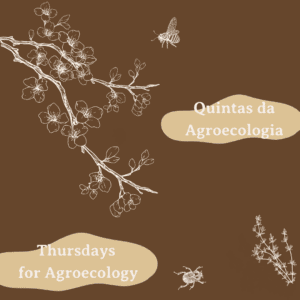- Thursdays for Agroecology #6
 Natural enemies: our greatest allies in organic farming! In organic agriculture, natural enemies—such as insects, birds, and microorganisms—play a vital role in controlling pests and diseases. Their action helps reduce the use of chemical pesticides and protects biodiversity. These natural helpers work in different ways: Predators like ladybugs (which prey on aphids and scale insects),… Read more: Thursdays for Agroecology #6
Natural enemies: our greatest allies in organic farming! In organic agriculture, natural enemies—such as insects, birds, and microorganisms—play a vital role in controlling pests and diseases. Their action helps reduce the use of chemical pesticides and protects biodiversity. These natural helpers work in different ways: Predators like ladybugs (which prey on aphids and scale insects),… Read more: Thursdays for Agroecology #6 - Thursdays for Agroecology #5
 What Are the Multifunctional Plants? What Are the Multifunctional Plants? They’re not just pretty faces—multifunctional plants are green superheroes in your garden or on the farm! These powerful plants do more than just grow: Naturally fight pests; Attract pollinators like bees; Communicate with soil microorganisms; Adapt to tough conditions like drought or strong sun Together,… Read more: Thursdays for Agroecology #5
What Are the Multifunctional Plants? What Are the Multifunctional Plants? They’re not just pretty faces—multifunctional plants are green superheroes in your garden or on the farm! These powerful plants do more than just grow: Naturally fight pests; Attract pollinators like bees; Communicate with soil microorganisms; Adapt to tough conditions like drought or strong sun Together,… Read more: Thursdays for Agroecology #5 - Thursdays for Agroecology #4
 What is the Agricultural Cycle — and Why Does Planning Matter? The agricultural cycle is the set of steps we follow to grow food — from preparing the soil to harvesting — always in tune with the seasons and nature’s rhythms. At the heart of this process is crop planning, which helps us think ahead… Read more: Thursdays for Agroecology #4
What is the Agricultural Cycle — and Why Does Planning Matter? The agricultural cycle is the set of steps we follow to grow food — from preparing the soil to harvesting — always in tune with the seasons and nature’s rhythms. At the heart of this process is crop planning, which helps us think ahead… Read more: Thursdays for Agroecology #4 - Thursdays for Agroecology #3
 Polycultures & Associated Crops: A Smarter Approach to Agriculture In agriculture, polycultures refer to growing multiple plant species together in the same space, either at the same time or in planned cycles. This contrasts with monocultures, where only one crop is grown. Associated crops focus on selecting species that complement each other in their growth… Read more: Thursdays for Agroecology #3
Polycultures & Associated Crops: A Smarter Approach to Agriculture In agriculture, polycultures refer to growing multiple plant species together in the same space, either at the same time or in planned cycles. This contrasts with monocultures, where only one crop is grown. Associated crops focus on selecting species that complement each other in their growth… Read more: Thursdays for Agroecology #3 - Thursdays for Agroecology #2
 Agroecological Principles: Building a Sustainable Future for Agriculture Agroecology is all about promoting sustainability in agriculture and natural resource management. By focusing on efficient resource use, biodiversity, and system resilience, it aims to create a healthier, more sustainable future for our planet. Here are the key principles that guide this approach: Diversity: Boost biodiversity in… Read more: Thursdays for Agroecology #2
Agroecological Principles: Building a Sustainable Future for Agriculture Agroecology is all about promoting sustainability in agriculture and natural resource management. By focusing on efficient resource use, biodiversity, and system resilience, it aims to create a healthier, more sustainable future for our planet. Here are the key principles that guide this approach: Diversity: Boost biodiversity in… Read more: Thursdays for Agroecology #2
